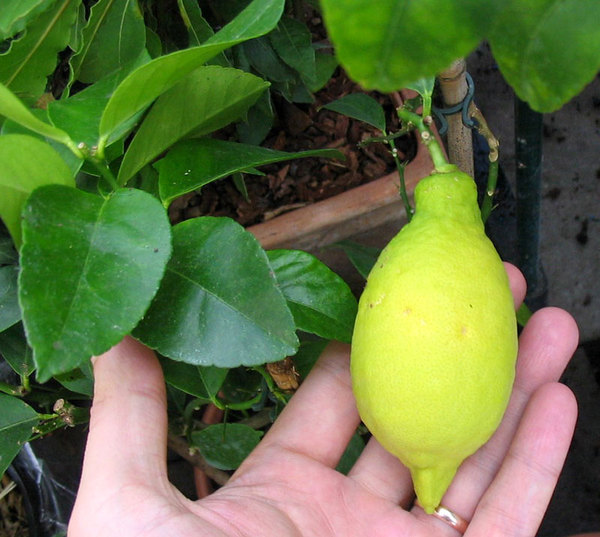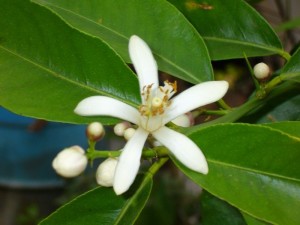Lunario lemon - the most prolific and unpretentious
This variety is very common among gardeners. It is notable for the fact that it blooms throughout the season, and not only in the spring or autumn.... An interesting fact, the Lunario lemon got this name because it begins to bloom at every new moon, thus it no longer depends on the season, but on the phase of the moon.
Description of the variety
More commonly, this plant is known as the four-season lunario lemon, since its flowering period lasts all year round, and on an adult tree, buds, blossoming flowers, completely green ovaries and ripening fruits are always present at the same time.
Lunario lemon is a tree-like lemon. He is short. At home, an adult plant reaches 0.8-1.5 m in height, in rare cases 1.9-2 m. The bark on adult branches is dark gray or brown, young shoots have a dark green tint. The leaves are large, glossy, 14-16 cm long, dark green or deep green in color. They are wide at the base, oval in shape. The petiole is short, up to 1 cm. On the branches there are many sharp thorns 2.5-4 mm high, brown-violet in color.
The buds are purple or dark pink. The flowers are large, white, bisexual, 4.5-6 cm in diameter. They have a pleasant, fresh, long-lasting aroma that intensifies when touched. Scattered on the branches singly or collected in a few inflorescences.
Fruits are large or medium-sized, oblong elliptical or elongated oval in shape, at the base have a pronounced neck and an elongated, pointed papilla surrounded by a small groove. Typically, lemons are close to the branches. Ripe fruits are pale yellow in color, lighter than those of regular lemons. The rind is very thin and smooth. The pulp is juicy, not very sour, greenish-yellow in color. In addition, it is very aromatic and can be easily divided into 9-12 segments. Most often, there are no seeds in the fruit or there are 1-2 seeds per large lemon.
The growth rate is active, the annual growth is about 10-15 cm. The crown is prone to thickening and asymmetry, therefore, it is necessary to carry out light pruning, which allows you to form the crown of the desired size.

Growing
Like all subtropical plants, the Lunario lemon requires a lot of light. However, do not expose it to direct sunlight on a windowsill. In winter, when the daylight hours are short, the tree needs additional illumination, which ensures the ripening of the fruits and the active development of the plant. All citrus fruits are difficult to tolerate drafts and a drop in room temperature.
You should also maintain a relatively high humidity of 65-75%. Water and spray the plant regularly with warm water. To avoid waterlogging of the earthy coma, it is necessary to ensure good drainage in the root part. The substrate must be breathable. It is desirable that in its composition there are equal parts of sand, humus, deciduous and turfy land. Propagated most often by cuttings.

The soil should be constantly enriched with minerals and various fertilizers - phosphates, nitrogenous and potassium salts. To accelerate the growth and flowering of lemon, it is transplanted up to 2-3 times a year or the upper earthen layers are renewed if the plant has a well-developed crown. During the period of active flowering, the tree needs to be provided with complete rest, do not move it or turn it, otherwise the lemon can shed flowers and ovaries.
This lemon gratefully responds to competent care.It is not very whimsical in comparison with other varieties, however, it should be noted that in the summer the fruits are smaller, and the winter yield is not so abundant.
Video "Lemon Lunario - reproduction"
Simple but effective tips for propagating lemon with air layers can be found in the video below.
